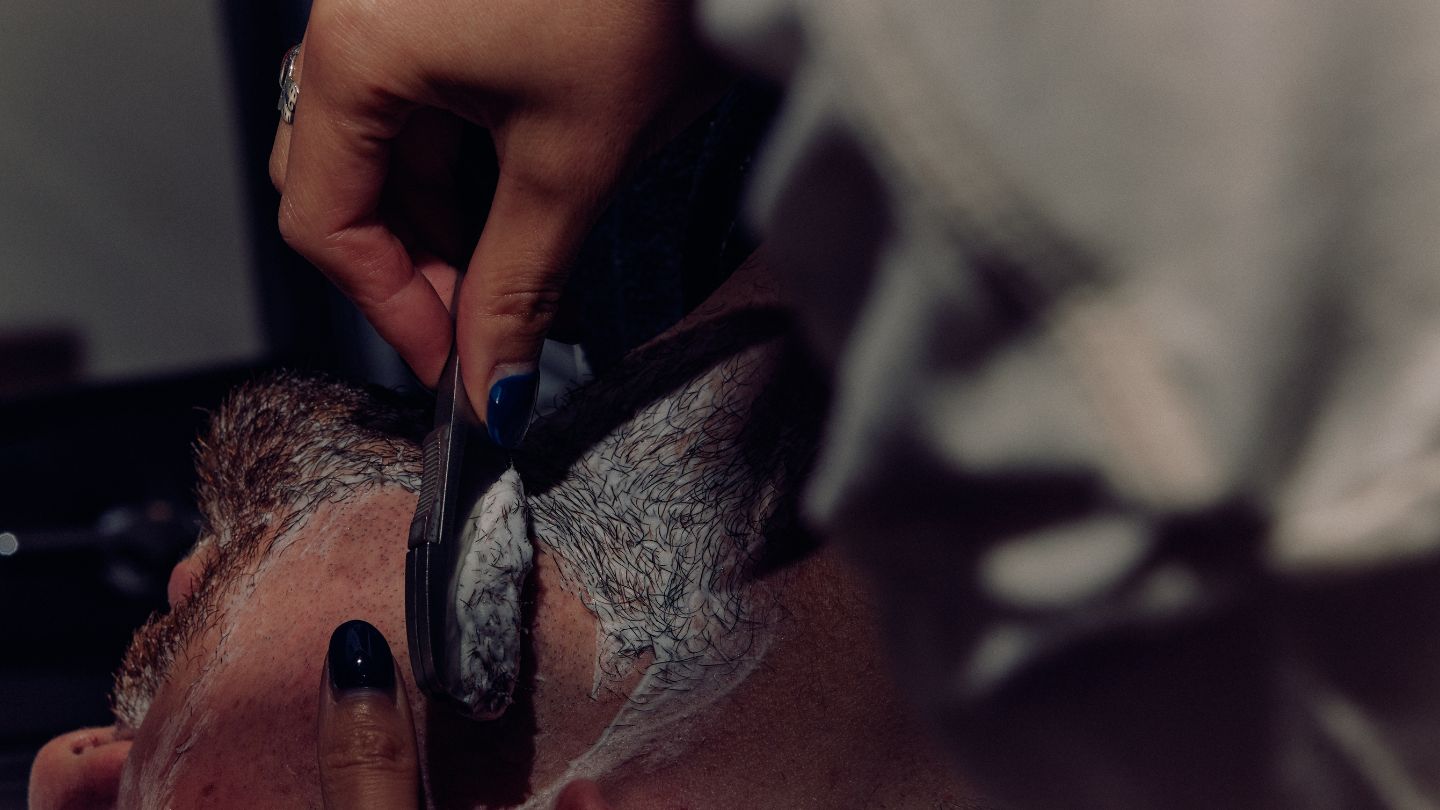For many, the thought of shaving evokes discomfort, conjuring images of painful red rashes, irritating razor bumps, and pesky ingrown hairs. However, this needn't be the case – a shaving experience should be devoid of harshness and, above all, enjoyable. If you find yourself grappling with razor bumps, it's time to reassess your shaving routine. Consider the time and attention you devote to this ritual. Once you've reflected on this, there are numerous strategic adjustments you can make to achieve a smoother, bump-free shave.
What Are Razor Bumps and Burns? Why Do We Get Them?
Know thy enemy. An ingrown hair occurs when a hair grows back into the skin, leading to inflammation in the surrounding area. Without proper preventative measures, any shaved areas are susceptible to ingrown hairs and razor bumps. This happens when the hair is poorly cut, growing back at an angle that prevents it from properly piercing the skin's surface. Alternatively, the hair might penetrate the skin but then curl back and embed itself into nearby skin. Individuals with curly hair are particularly vulnerable to ingrown hairs due to the natural tendency of their hair to curl back into the skin as it grows.
Razor burn, on the other hand, differs from razor bumps, although they can both occur simultaneously. Razor burn manifests as a tender rash, often resulting from a shave that has irritated the outer layer of the skin, leaving behind a burning sensation.
How to Prevent Razor Bumps and Burns When Shaving
Pre-Shave Preparation
Which is to say, prepare the ground that you shave. Soften your facial hair by washing your face with warm water before shaving, or having a shower beforehand. Cleansing and exfoliating too is welcomed.
Consider using a pre-shave oil or cream to further soften the hair and lubricate the skin, providing an extra layer of irritation insurance. It prepares the skin by coating the hairs, aiding the razor as it glides over the face. A favourite is Taylor of Old Bond Street's Sandalwood Pre-Shave Oil, its thick viscosity cushions, and can be massaged into the hair and skin underneath in preparation for further lather on top.
The Right Tool
What do you shave with? We always recommend a double-edge 'safety' razor, standing in contrast to disposable multi-blade cartridge razors. We like the Merkur 34C particularly, our most popular safety razor. The double-edge has persisted since its genesis for good reason, and despite falling out of fashion, it has made a comeback. Opposed to the irritating tugging-and-cutting action of a cartridge razor: this pulling action of the cartridge razor - hysteresis - extends the hair beyond its natural point, causing it to curl when it grows back.
Ensuring the razor blade is sharp means that the hair will be cleanly cut, ensuring that it doesn't grow back awkwardly into the skin, causing irritation. All razor blades differ in terms of sharpness, and we suggest trying a few out in order to ascertain the best one for you.
Importantly, when you feel that the razor is dull and is no longer adequate to the task at hand, it is best disposed of carefully. For most individuals, simply swapping to a safety razor is an ample shift in preventing razor bumps and nasty ingrown hairs.
Good Technique
Take your time, and proceed with your first pass in the natural direction of hair growth with the grain, especially if you’re prone to ingrown hairs. Although shaving against the grain provides a closer shave, there is the risk of curling hairs back into the skin. Where possible, avoid going over the same area multiple times, as this can cause friction and increase the likelihood of razor burn.
A Cushioning Lather
Lather up, it’s a must! The best lather is soft, protective, and cushioning - allowing the razor to glide as opposed to drag and pull, a major source of razor burn and irritation. Look for products that are rich and generous in their oil content, which are especially moisturising and provide an excellent buffer. The lanolin-rich nature of Mitchell's Wool Fat Soap makes for a slick, soothing, and hydrating experience. Applied with a brush, this produces an even, richly-emulsified, and steady lather whilst massaging the skin. A cream we particularly love is Geo. F. Trumper’s Coconut Oil Shaving Cream - rich with coconut oil, it softens hair and skin and produces an unparalleled slickness as razor passes through growth.
Avoid Over-Shaving / Post-Shave Care
Shaving is a ‘hot’ process, and inherently aggravating, no matter how much care you give to the process. Give your skin time to recover between shaves, as frequent shaving can increase the risk of irritation and ingrown hairs. If possible, shave every other day rather than daily.
It’s important to listen to your skin, which welcomes a cooling post-shave treatment, such as an aftershave balm. Ingredients with antiseptic and anti-inflammatory properties such as tea tree oil and/or witch hazel soothes redness and repairs the skin, and is effective for razor rashes and burns. Low concentrations of beta-hydroxy acids (BHA), such as salicylic acid, may also be present as it penetrates below the skin, clearing the hair follicles and preventing any clogging.
Baxter of California’s After Shave Balm is a beloved favourite, with a cooling gel consistency loaded with aloe vera, glycerine, and tea tree to soften and soothe.
The Best Products to Help Clear Up Razor Burns and Bumps, Fast
If ingrown hair and razor bump treatment is more imminently required, topical 'spot treatment' products with a concentrated combination of acids as their active ingredient work at and unearth ingrown hairs and eradicate those itchy clear white bumps after shaving, which occur due to the inflammation of the hair follicle.

Consider Tend Skin's Ingrown Hair Solution. The careful and considerate application of spot treatments are recommended for the removal of ingrown hairs and razor bumps, opposed to tweezing or physically exfoliating the skin, as these processes can be quite painful and run the risk of scarring.


